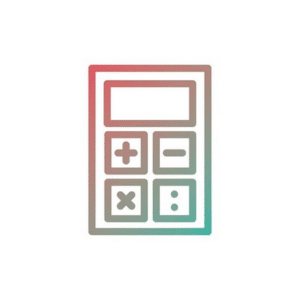Table of Contents
(Translation for Refinansiering Lån Kalkulator: Loan calculator for refinancing)
No one wants to take on more debt than they can afford. When refinancing a loan becomes necessary, it’s essential to figure out a borrowing amount that will fit comfortably and affordably with other monthly obligations.
Many financial institutions supply lånekalkulator refinansiering, a loan calculator for figuring out refinancing figures including the monthly installment when the principal and interest are estimated.
When using these tools, the borrowing amount will be input into the system along with an estimated interest rate and the term. When you get an idea of the monthly payment to help develop a more realistic budget, you can move forward with the loan process more confidently.
It’s even possible that you will be able to pay extra on the monthly payments or repay the debt early if there’s no prepayment penalty associated with the loan.
You’ll also want to make sure this is not the case with the original loan making refinancing unwise depending on the logistics of the refinance and the fee associated with the penalty.
Tips on Calculating Monthly Installments

Financial institutions use loan payment calculators to help break down the principal balance on refinanced loans into installments and apply an interest charge you assess. Many of the loan calculators are relatively simple with the amortization handled by the entity.
For those who want to dive deeper into the logistics like amortization, more robust tools offer these details. Amortization, as it applies to loans, is the process of consistently paying the debt on a standard fixed schedule. Read here for financial management using loan calculators.
In the first few years of a traditional loan or a refinance, a majority of the installment will be applied to the interest. The interest and principal are divided into percentages.
After a considerable time period of mainly paying interest, the installments will consist of only the principal. Here are loan types for virtually any need offered by varied lenders with competitive rates.
When considering which is most suited for your situation, it’s important to compare the choices to ensure the solution will serve you and your finances optimally in the future.
-
The Personal Loan
The personal loan is an unsecured lending product. That means the borrower doesn’t need to supply the lender with collateral or a valuable asset to secure the funds if the loan defaults.
When refinancing a personal loan, the new loan replaces an existing one. When approved you will receive a lump sum upfront. The borrowed amount will be repaid in equal monthly installments for the predetermined life of the loan with a fixed interest rate.
You can work with any financial institution to obtain a personal loan whether you choose an online lending platform, a credit union, or a traditional banking institution. The loans can typically be used for any purpose depending on the lender. Some loan providers specialize in particular loan types.
It’s important to be mindful of the loan type and the type of lending agency before formally applying for a loan. Some will work only with consolidating debt or home improvements.
Terms for personal loans range as high as five years with a cap on interest of 36 percent and starting interest rates of roughly 12 percent. Borrowers with excellent credit can see interest as low as the single digits but variables like financial standing and debt ratio will also contribute to the final rate.
-
The Home Equity Loan

Refinancing with a home equity loan will see the house used as collateral. This is a secured loan meaning the lender can come in and seize the property for foreclosure if the loan payments stop.
This and a home equity line of credit are determined based on the amount of equity accumulated in the home or the property value minus what has been paid down. The interest on these loans is lower than most other lending products and the terms are more favorable.
-
Car financing
You also use a secured loan product when financing or refinancing a vehicle. The collateral in this scenario is the vehicle. The car can be seized and sold if the payments were to stop on the loan.
In the same context as a personal loan, you will be provided with the funds in a lump sum amount up front for the purchase or refinance of the vehicle. The monthly installments are equal, with a fixed interest for a predetermined time period.
Before buying a vehicle, it’s wise to compare a number of providers to get the most competitive rates. The payments for an auto loan can be considerable and you want to ensure that the loan is comfortable and affordable for your budget and lifestyle.
-
Student debt
With student lending, these loans are strictly for educational purposes. You will find both private and federal products. Federal lending is the better option for students since these come with “standardized deferment/forbearance periods” and client protection.
If federal loans are difficult to obtain, comparing as many private lending options as possible is wise to ensure favorable terms and rates. These can be considerably broad in their differences from one to the next.
You’ll want to put careful forethought into the process and even consider using financial guidance to help with the process since these can follow you for the long term.
Secured vs. Unsecured Loan Products
Some loan types mentioned were secured while others required no collateral or were unsecured.
-
Secured lending
When a loan is secured, you as the borrower will need to supply the lending agency with an asset of a value equal to the borrowed amount that will serve as collateral.
The lender will decide what is acceptable for collateral, but usually, a house, car, savings, things of this nature are considered for secured loans. These loans are for a considerable amount but as the borrower you take a significant risk in losing your assets.
Because the lender has minimal risk, the loans are offered at lower interest with favorable terms. Loans in these categories used for refinancing are home equity and auto refinance.
-
Unsecured lending
Unsecured loans require no collateral to secure the funds, making them less risky for you as the borrower but riskier for the lender. You can see the lowest interest rates if you have excellent credit because you’ll be seen as a better risk.
Loan providers assess these loans with more stringent guidelines assigning smaller loan amounts and higher interest rates to account for the greater risk. Personal loans and student loan debt fall under unsecured loans that can be refinanced.
What Are Terms to Be Familiar with Relating to Loans

One primary component of a loan to become familiar with is the interest. Interest is the amount paid to the lender for borrowing money shown as a percentage of the principal loan amount.
APR- annual percentage rate is a more realistic yearly figure denoting the loan’s cost including the interest and associated fees and charges. These can include closing costs for refinancing using a home equity loan.
Before engaging with a loan calculator, you’ll need to understand the terms to be able to supply the details. These will also be used by loan providers and in the contract.
-
Principal
The loan amount you’re approved for by the lending agency or want to refinance. The funds are often received in a lump sum amounts with the initial repayment due in equal monthly installments.
-
Term
The term is a predetermined length of time the loan provider designates for you to repay the loan’s balance. The longer the term, the less the monthly installment will be.
However, if you decide to extend this that will also mean a more significant amount of interest on the loan, making the product more expensive overall.
-
The Monthly Installment
The monthly payment is designated by a percentage of the interest and that of the principal. For a specific time period the interest will make up a majority of the installment.
It will decrease gradually until the principal comprises the entire payment. When refinancing a loan, the cycle starts again, with the interest being due from the start.
Final Thought
Before taking a traditional loan or refinancing an existing loan, finding out how much you can comfortably afford is a priority. With most financial institutions, you’ll find tools like simplified loan calculators that make the process of determining monthly installments relatively straightforward.
These calculators need the loan amount, the term, and the interest to give a relatively accurate idea of the payment. This will allow you to set up a budget before formally applying for the loan to ensure it fits comfortably with your other monthly expenditures.
You should allow extra money if you want to pay an added payment periodically or even pay the approved loan amount off sooner rather than later. Before repaying a loan in full make sure there are no prepayment penalties either with the original loan or the newly refinanced product.
Read more on KulFiy
